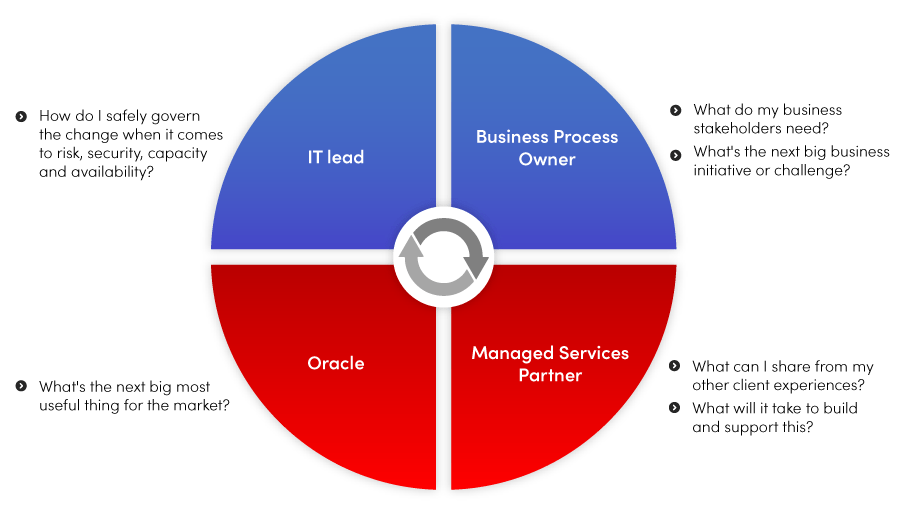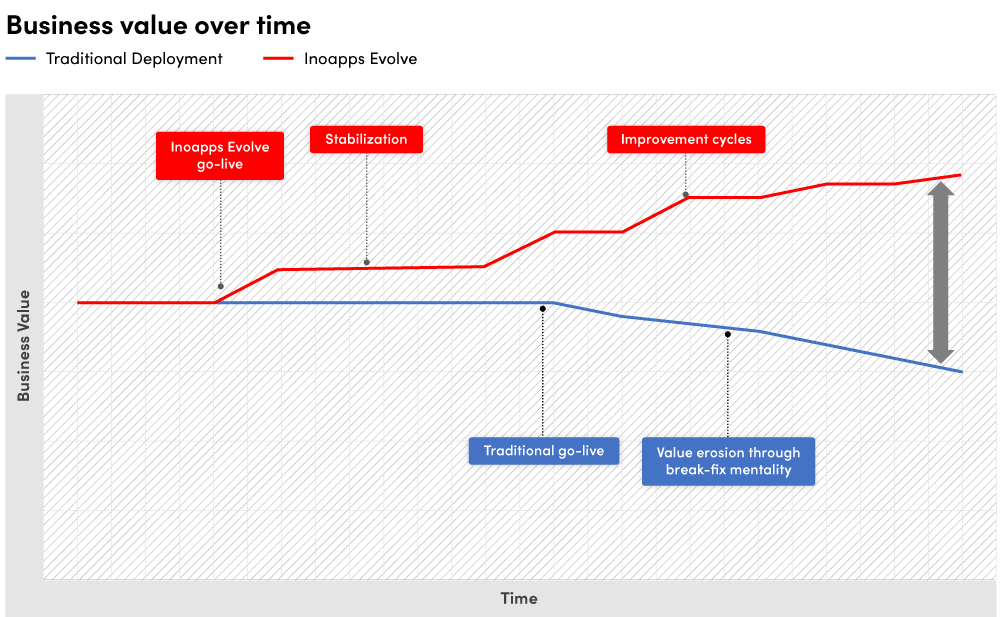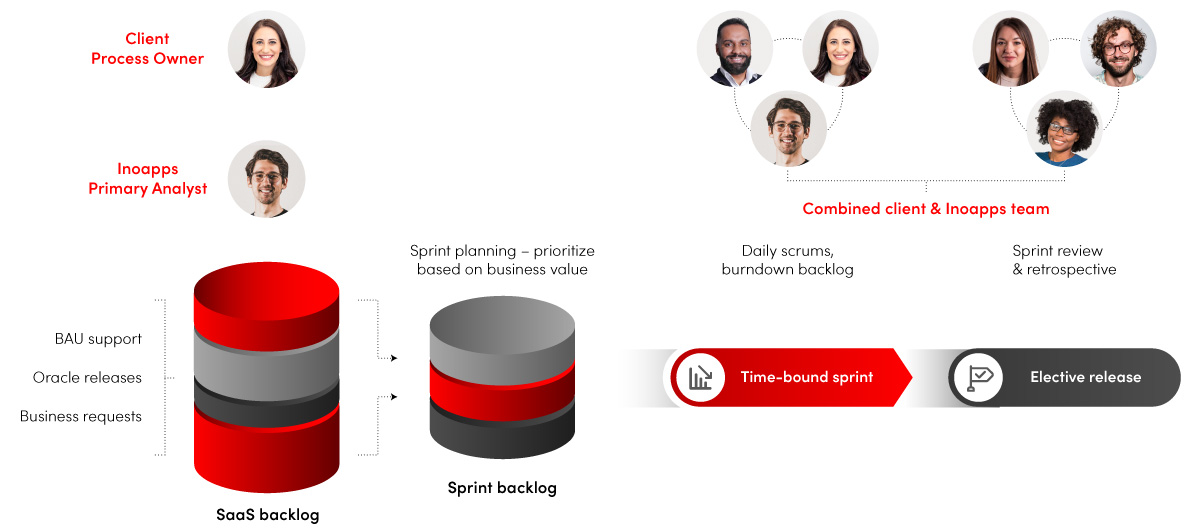Accelerate time to value with Inoapps & Oracle Cloud Apps: Part Five

Get ready for your journey of continuous improvement
By Brian McCabe
SVP Global Managed Services at Inoapps
In previous blogs, we reflected on the need to identify outcomes and maintain a clear focus on objectives, as well as the fundamental role people play in an implementation and the importance of a clear roadmap.
However—at the risk of sounding controversial—by the time you go live, the greatest impact on your business has been the cost of getting there.
The steps we’ve discussed in this series are vital for future success. However, true business value is only realized once you're working within your new platform.
So why do so many organizations fail to truly capitalize on their shiny new software? Why is go-live considered to be ‘job done’ and time to go back to the day job?
That’s because, once up and running, many organizations tolerate rather than embrace the updates that bring new and enhanced features from Oracle’s product development teams. And that’s a big mistake.
Go-live is just the start of your journey
Once upon a time, technology-enabled transformation projects ended when the system went live. Then followed a decade or so of business-as-usual before the next major transformation or upgrade happened. That is now a thing of the past.
Most organizations recognize this, but few truly embrace the new world of cloud and its ethos of ongoing evolution. Many still succumb to ‘if it isn’t broken, don’t touch it’ thinking, and after go-live stakeholders return to their departments and expect IT to manage the system.
Over decades in technology delivery roles, I’ve seen trends come and go. From mainframes to federated architectures; from client-server to the Network Computer. All promised leading-edge technologies to transform the way businesses operate. Except those advances were essentially technology for technologists.
Software as a Service (SaaS) fundamentally changes the game. Now, systems are owned by the business, and IT, with specialists like Inoapps, serve the business rather than own the solution.
Continuous improvement is about more than keeping the lights on
Part of the issue is that we’ve lived in the break-fix world of reactive support for decades. With SaaS, choosing to only fix things when they break, or perform minimum maintenance, translates into progressive value erosion from the moment you go live. Instead, you need to focus on balancing support activities with driving continual improvement and incremental business value.

Focus on business value
Your business case for moving to cloud was probably based on executing against a roadmap. Now, long after the go-live pizzas have gone cold, you need to stick to that roadmap.
Continuous improvement is informed by several interlocked factors:
- Changing business requirements
- Oracle’s evolving features
- The cost of change
- Your systems’ performance
This requires ongoing collaboration between business, IT, your Managed Services Provider and Oracle. These four must work together to decide which changes will deliver greatest business value.

Continuous improvement never ends, and the four key stakeholders need to work together to assess each release to decide which to prioritize.
This is where Inoapps Evolve helps move your system from minimal viable product to a living, breathing business growth engine. Inoapps Evolve was created to get you up and running fast and prime you for continuous improvement. First we ensure you have a solid foundation with the core functionality you need to get started. Then we help evolve your solution in line with your roadmap, and adjust as your business, technology and the world around you changes.

Sounds good in theory, but what does this actually look like?
Ongoing, the four stakeholders are engaged in a ‘Plan – Do – Check – Act’ cycle that, in my experience, isn’t served by the bureaucratic waterfall change tradition and needs an Agile approach. Here’s what that looks like:

The SaaS backlog is all the things you could do and it comes from multiple sources:
- Optional Oracle updates
- Business change requests
- Inoapps recommendations
Your sprint is what you’re actually planning to do—the items that align with your roadmap and deliver greatest business value. You decide this in sprint planning to create your sprint backlog. Ideally you schedule a series of sprints in advance and interleave these with the Oracle quarterly update cycle, like this:

Why take this approach?
- Oracle quarterly updates can then focus on mandatory changes and bug fixes, limiting risk of too many changes within a short timeframe, and giving you time to review optional features against business need.
- Your business users have confidence that, when they request a change, it will be added to the backlog, reviewed, and is likely to happen.
- Your internal and external service providers can plan resources more effectively than with a more reactive approach to change, and deliver more predictable and consistent change services.
- The overall change philosophy of ‘little & often’ aligns with the cloud ethos for driving continuous improvement.
The net result
With Inoapps Evolve, the goal isn’t just to get the system live in an optimal timeframe. Yes, we do provide rapid time to value with our accelerated project approach—but the true business value is recognized by keeping to your roadmap while maintaining focus on ever-changing business demand.
We hope you’ve found this series useful. Get in touch if you’d like to discuss how our Inoapps Evolve implementation and continuous improvement methodology can help you achieve rapid time to value.
